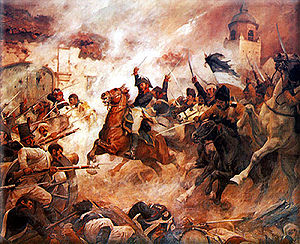Disaster_of_Rancagua
Battle of Rancagua
1814 battle in the Chilean War of Independence
The Battle of Rancagua, also known in Chile as the Disaster of Rancagua, occurred on October 1, 1814, to October 2, 1814, when the Spanish Army under the command of Mariano Osorio defeated the rebel Chilean forces led by Bernardo O’Higgins. This put an end to the Chilean Patria Vieja and it was the decisive step of the Spanish military Reconquest of Chile.[1]

